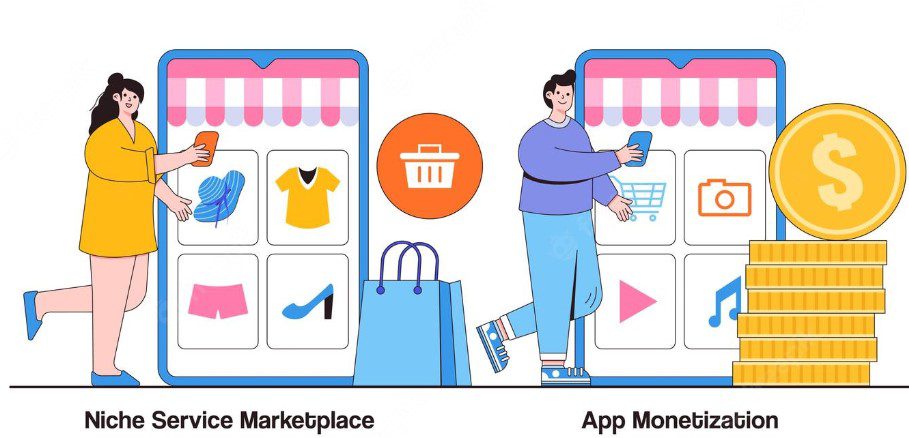Anyone can create a digital marketplace for selling products, but it’s a lot more challenging to sell your products on one. However, if you have the right strategy and proper vendor management software, digital marketplaces can be a great way to drive traffic, scale sales, and increase brand awareness. The process of listing and selling your products on a digital marketplace is called Vendor Management. It involves setting up a vendor profile and administrative dashboard so that you can keep track of orders and sales while displaying product information to buyers in an organized manner. We’ve outlined the top things you need to know about selling products on e-commerce marketplaces like vectorgi, Amazon, or eBay. From understanding their requirements to structuring your listing and pricing strategy, we’ll help you get started with the basics so that you sell more and grow faster as an e-commerce business.
What is Vendor Management?
As online shoppers browse through online marketplaces looking for products to buy, they will come across brands or merchants selling products. Customers can then click on the merchant’s product listings and start browsing through the product information or even make purchases right away. E-commerce marketplaces, like vectorgi, Amazon, eBay, and Etsy, are designed for individual sellers to list their products for sale. However, the process of listing and selling your products on a digital marketplace is called Vendor Management. Vendor management is the process of managing all the aspects of your business as a seller on an e-commerce marketplace. It involves setting up a vendor profile and administrative dashboard so that you can keep track of orders and sales while displaying product information to buyers in an organized manner.
Types of Vendor Management
There are three major types of vendor management software that you can use to maintain your online store on an e-commerce marketplace. They are:
Self-managed: The seller handles all the operations of the business, including product listing, customer service, and inventory management. This may work well if you are comfortable managing all these aspects of your business on your own. Managed: The seller outsources the activities related to vendor management like product listing, customer service, and inventory management to a third-party service. You can run your online store in this way without much hassle.
Hybrid: A hybrid model is a combination of the two above vendor management types. In this setup, you manage your business, but use a managed service to handle the external activities of vendor management like product listing, customer management, and inventory tracking.
Why Is Vendor Management Important?
Selling products on an e-commerce digital marketplace is a great way to expand your sales, increase your brand awareness, and increase your revenue. However, you need to understand the ins and outs of the process so that you can start growing your business more efficiently. In this article, we will discuss the top reasons why you should use an e-commerce marketplace for selling your products.
Getting Competitively Priced: E-commerce marketplaces are great places to source inexpensive inventory. If you are sourcing inventory from suppliers around the world, you can get products at discounted prices as well.
Finding New Customers: E-commerce marketplaces are the best places to find new customers. When sellers list their products on these marketplaces, they get enormous reach. Even if only a small percentage of buyers use your products, this reach is still significant.
Growing Your Brand Awareness: Another great benefit of using an e-commerce marketplace is that it increases brand awareness. When you list your products on an online marketplace, you will get a large number of visitors who browse the product listings. These visitors can then click on your listing and make purchases.
How to List Products on E-Commerce Marketplaces
The first thing you need to do is create a vendor account on the marketplace you want to list your products on. From the marketplace dashboard, you will be able to set up your products, add images, and set up seller policies. You can also choose the marketplace settings and add a tagline or product description. You can also choose the listing type, listing format, and the listing schedule of your product listing. You can choose the listing format based on your inventory management strategy.
Physical goods: If you intend to offer your products for sale in a physical store, this is the best format for you. Listing your products in a physical store will allow you to set up a virtual storefront.
Fulfilled: This is the best listing format for offering digital goods, like e-books, software, or digital products.
Dropshipped: If you sell products that are manufactured and shipped from external suppliers, this is the format for you. You will have access to inventory tracking, sales reports, and shipment notifications.
Factors that Affect e-Commerce Product Listings
There are three aspects of your product listing that will determine the success of your listing on an e-commerce marketplace. They are:
Product quality: The best thing you can do to improve your product listing’s chances of getting a sale on an online marketplace is to make sure your listing is up to par with product standards. You can use image filters to enhance the product images on your listing or play around with product titles, descriptions, and prices.
Back-end listing information
Your product listing information is an important part of your listing. You should make sure that it has all the information that is required to sell a product. This includes product descriptions, product images, keywords, product dimensions, and a product list.
Product listing layout: Lastly, your listing layout plays an important role in the success of your listing. You can configure your pricing, shipping, and product information settings to make sure you get the best results.
Strategies for Growing Your Product Sales in Digital Marketplaces
Here are some effective strategies that you can follow to grow your sales on an online marketplace. They are:
Integrate your digital storefront with your e-commerce website
The best way to drive online sales is to create a seamless experience between your website and your storefront. You can create a centralized landing page or sign up for e-commerce software that will help you manage your website and product inventory on one platform.
Use effective listing formats: The most common mistake sellers make on e-commerce marketplaces is using the wrong listing formats. You should use the right format for the type of product you are selling. You can use physical product format for digital products or fulfilled product format for drop-shipped products.
Make use of seasonal sales: Another strategy you can use to drive more sales on an online marketplace is to make use of seasonal sales. You can offer 10%-50% off all your products during certain occasions like Black Friday, Cyber Monday, or the upcoming holiday season.
Wrapping Up
Selling products on e-commerce marketplaces is a great way to expand your brand and generate new sales. However, it requires a lot of effort to create a great listing and drive sales from it. The best way to succeed in this field is to choose vendor management software and integrate it with your website. There are several vendors that offer this kind of software and will help you seamlessly integrate it with your website. These vendors will help you create a great selling experience for your customers by making sure they can buy your products easily.












Discussion about this post